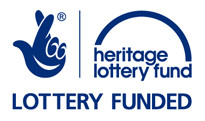The National Archives at Kew in London holds a great many official records which cast light upon local affairs, and an increasing amount can be identified from their online ‘Discovery’ catalogue. We are grateful to their staff for their assistance in obtaining copies of documents used within the project. Follow this link to their home page for details on their services, access to the online catalogue, location and visitor information.
Exchequer Court cases (catalogue class E 126 & 134)
Property and other disputes were often brought as legal cases before the Exchequer Court in London. Statements or depositions of witnesses called by the claimants and defendants are often of greater interest than the case itself, as first-hand accounts of events, life and work of the times. Transcripts here are of witness depositions in cases brought in 1667 by Rector Isaac Basire of Stanhope against Humphrey Wharton, moormaster of Weardale, concerning tithe payments (19 Chas 2/East 33 – and see also C8/181/216 below), 1680 by Humphrey Wharton against the Bishop of Durham and Sir William Blackett concering alleged infringement of Wharton’s moormastership in Weardale (32 Chas 2/ Mich18, accompanied by a spreadsheet listing mines), 1686 by Bishop Crewe of Durham against Wharton concerning his dues (2Jas 2/Mich 42) and in 1690 by William Blackett II against Thomas Tempest concerning rights of way near Stella and Blaydon (2WandM/Trin 15 and /Mich 26). E 126/9 contains the court and orders in the Basire vs Wharton case of 1667, and E 126/14 further orders in Wharton’s case against Crewe and Blackett.
Greenwich Hospital records (catalogue class ADM)
After the failure of the Jacobite Rising of 1715 the estates of the Radcliffe family were confiscated. These included valuable lead mining rights on Alston Moor and in the 1730s were given to the Greenwich Hospital for Retired Seamen, run under the auspices of the Admiralty. The Hospital inherited many of the Radcliffe estate papers and therefore contain much material from the 17th century, including lead mining leases. Some examples from 1663 to 1699 are given in ADM 75/68. In the 18th century many of the Hospital’s lead mining rights were let to the London Lead Company from the 1740s which, with the Blacketts, came to dominate the industry in the North Pennines. The Greenwich Hospital’s extensive records of their Northern Estates include much of value to historians of the lead industry and other aspects of the economic and social life of the region. The documents available here include detailed letters from the Hospital’s Northern Receivers in the 1730s and 1740s, Nicholas Walton and Hugh Boag (ADM 66/105-108, which will be added to as further transcripts are completed) and miscellaneous later letters regarding lead in Hexhamshire (ADM 75/72). The Walton and Boag letters also include information on the estate the Hospital inherited in the Keswick area. Quarterly tables of workmen employed in the Alston lead mines and dues owed from the lead ore production have been drawn together into spreadsheets (TNA ADM 66/106 and 107 ‘Alston Moor dues tables’, corresponding to extracts from the original volumes of letters). Collections of letters relating to the Hospital’s own lead processing at the mill it built at Langley in 1768 are also available here, mostly from the receiver Nicholas Walton Junior (ADM 66/96-97), covering the years 1768-75 and 1775-82 respectively. Later letters from the receivers cover the end of the century and first years of the 19th century (ADM 66/82-5, 122-3). Transcripts included here are extracts from those collections rather than the complete contents, with a focus on material relating to the enclosure of commons in the North Pennines. ADM 75/157 includes copies of various leases & extracts of letters from the estate receivers between 1732-5, evidently collected together with the intention of informing the Treasury commissioners of what came into their hands shortly before the estate was granted to the Greenwich Hospital. Relevant extracts are included here; other entries not transcribed concern leases of tithe corn and the customs of the Cumberland estate manors. An example earlier lease from 1729 is in ADM 75/151/27. The Hospital also conducted frequent tours of inspection, ‘visitations’, of their estates, followed by the submission of reports. These reports give valuable insights into the conditions of the estate’s property. Extracts here include those parts of the thorough visitation report of 1805 relating to the lead districts of the Hospital’s Northern Estate (ADM 79/56), extracts on lead and land at Dilston and Hexhamshire for 1774 (ADM 79/57), the full report of the 1815 visitation (ADM 80/196), and reports by mining engineer John Taylor, road surveyor John McAdam and Hospital secretary Edward Locker in 1823 (ADM 79/61). On the same subject there are also journals kept from January 1833 by, firstly, William Hooper, the interim receiver and then John Grey, from June 1833 (ADM 80/15-19, 20).
Miscellaneous
These include the Chancery bill and answer between Isaac Basire and Humphrey Wharton in 1666/7 (TNA C8/181/216) which is closely related to Exchequer Court case 19 Chas 2/East 33 described above, and a bill from Wharton in a case brought against Bishop John Cosin’s heirs and executors in 1683, which relates to the moormaster’s lease for three lives obtained through Act of Parliament in 1667 (TNA C/8/338/301). There are also extracts from cases involving Robert and Mary Loraine in the 1750s and 1760s (TNA C 12…). There are two legal opinions from 1720 on disputes concerning Jeffreys lead mine in the upper Derwent valley in FEC/1/702-3. Wills proved at the Prerogative Court of Canterbury for Elizabeth Kirkley, William Blackett II, Elizabeth Ord, Peter Mulcaster, Nicholas Walton, Martin Morrison and Diana Beaumont are available in PROB/11/…

